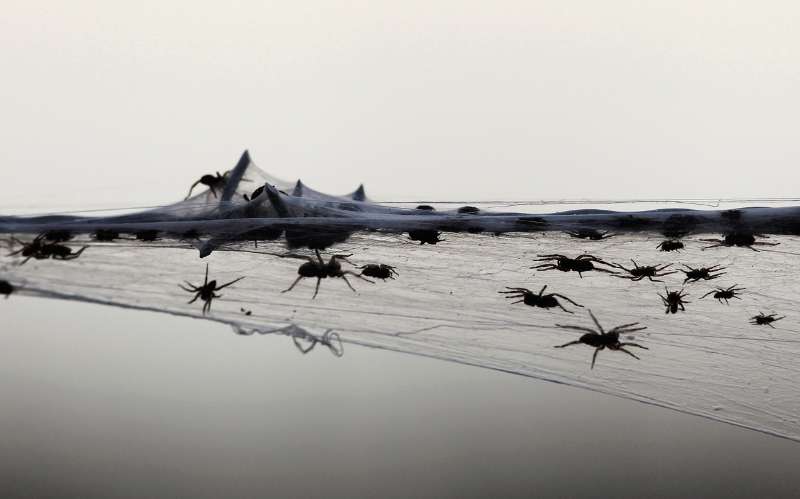How do floods affect pests?
Flooded areas force creatures living beneath the ground to find another home. Even insects that require lots of moisture, like millipedes and termites, will move when soil becomes oversaturated. If it rains heavily, you will see millipedes all over your exterior walls, deck, or patio.When flooding happens, furry creatures in fields and forested areas can get displaced. Water creeps in and they must leave their holes and tunnels to find higher ground. This can lead them right into your yard or even your home.
What types of pests are involved in floods
1. Mice and rats
Mice and rats love water-soaked wood, so they are especially vulnerable to flooding. These pests carry diseases and can contaminate your food, making it unsafe to eat. Mice also carry fleas that spread parasites from their fur onto your clothes, bedding, and furniture.In search of a new home, rats are known to be strong swimmers. They can break into properties by accessing damaged pipework, plumbing, or cracks. After the storm and flooding have passed, sheds can become the perfect next nesting place for household goods and other debris. There are common signs of their infestation you should beware such as, rat droppings, scratching noise, running tracks and footprints.
2. Ants
Thousands of ants are forced to leave their nest when rainwater runs through the ground and seek dry ground near their nest. Ants have been observed to attach themselves to whatever is out of the water and float around on each other in the water. Your property may become highly infested with garden ants as the floodwaters recede. As ants forage for food, they can bring in termites who will eat the wood in your home until there is nothing left. Commonly, the existence of ants is signed with live insects, ant pathways and ant nests.
3. Spiders
The rain and flooding can cause spiders to become disoriented, but it also provides an opportunity. Spiders follow their prey wherever it goes, so when it rains they will move inside your home to find their prey. Spiders prefer to construct webs where they believe they will be able to catch prey. As a result of the high rainfall levels, spiders are being washed out of their burrows and into our paths unsuspectingly. Usually, you can know their existence by finding webs, egg sacs, excess flying insects and seeing spiders.
4. Termites
Although subterranean termites require moisture to survive, they do not move to higher ground when heavy rains or floods threaten to drown them. Instead, they become immobile to conserve oxygen when heavy rain or floods occur. However, they can survive underwater for up to 16-30 hours during this immobile state. Termites can survive in saturated soil as long as their tunnels are not flooded.As a result of flooding around your home, moist conditions are created that attract moisture-loving termites.5. Cockroaches
To stay alive, all cockroaches need moisture and humidity, which means they are naturally drawn to moist, humid places. Due to the fact that millions of cockroach species live in sewers, gutters, or drain pipes, these places flood when we get heavy rain.As a result of flooding, cockroaches will be displaced from their homes and will move into your own. Cockroaches are widespread in and around your home after periods of heavy rain and flooding. These cockroaches are most likely evacuees who crept into your home after the flooding.
6. Snakes
During a flood, snakes may be forced to flee their homes. This may lead them to seek shelter and food inside buildings, such as houses, sheds, and garages. Snakes have easier access to damaged structures and debris.Steps to take to prevent pests after the flood
The challenges and difficulties associated with recovery following a flood are already compounded and made worse with pest problems. You can take the following steps to reduce pest pressure after flooding in your home:
1. Inspect the property for any damage: It is important to inspect the property for any damage that may have been caused by the flood. This includes structural, electrical, and plumbing damage.
2. Secure Any Access Points: One of the most important steps in controlling pests after a flood is to seal up any and all access points. For example, holes around plumbing pipes, cracks in electrical outlets, and small openings in walls. You can use caulk to seal these areas up.
3. Control Moisture:The most important pest control measure after flood water recedes is to dry out your home and belongings that were exposed to the flood. This will reduce the likelihood of attracting pests.
4.Locate Sources of Trash and Organic Matters: Trash and organic matter will attract pests, especially in the aftermath of a flood. To avoid this, remove any trash that has been left behind by water. If you have anything stacked or stored on your property, make sure you check under it.
5. Create an Insecticide Barrier: If you have any pet products containing permethrin or a permethrin-based spray or fogger, you can use it to create an insecticide barrier. This will create a permeable veil that prevents insects from entering your home.
6. Clean and Sanitise: You'll want to vacuum up any food, animal droppings, and debris that may have accumulated before and after the flood. Moreover, you should dispose of any contaminated food or furniture.
7. Get Rid of the Pests: The first step to controlling pests is to get rid of them. This means calling in a professional pest control specialist right away. They will be able to assess the situation and take necessary steps to eradicate any pests that may be present in your home.
We can undertake our services for big or small pests, so don't hesitate to get in touch with us if you want help removing pests. With over 15 years of experience in business, we at City Pest Control, provide proven effective pest control services for the domestic and commercial markets in Canberra and Queanbeyan locations.
We hope you’re all safe during this time.



































